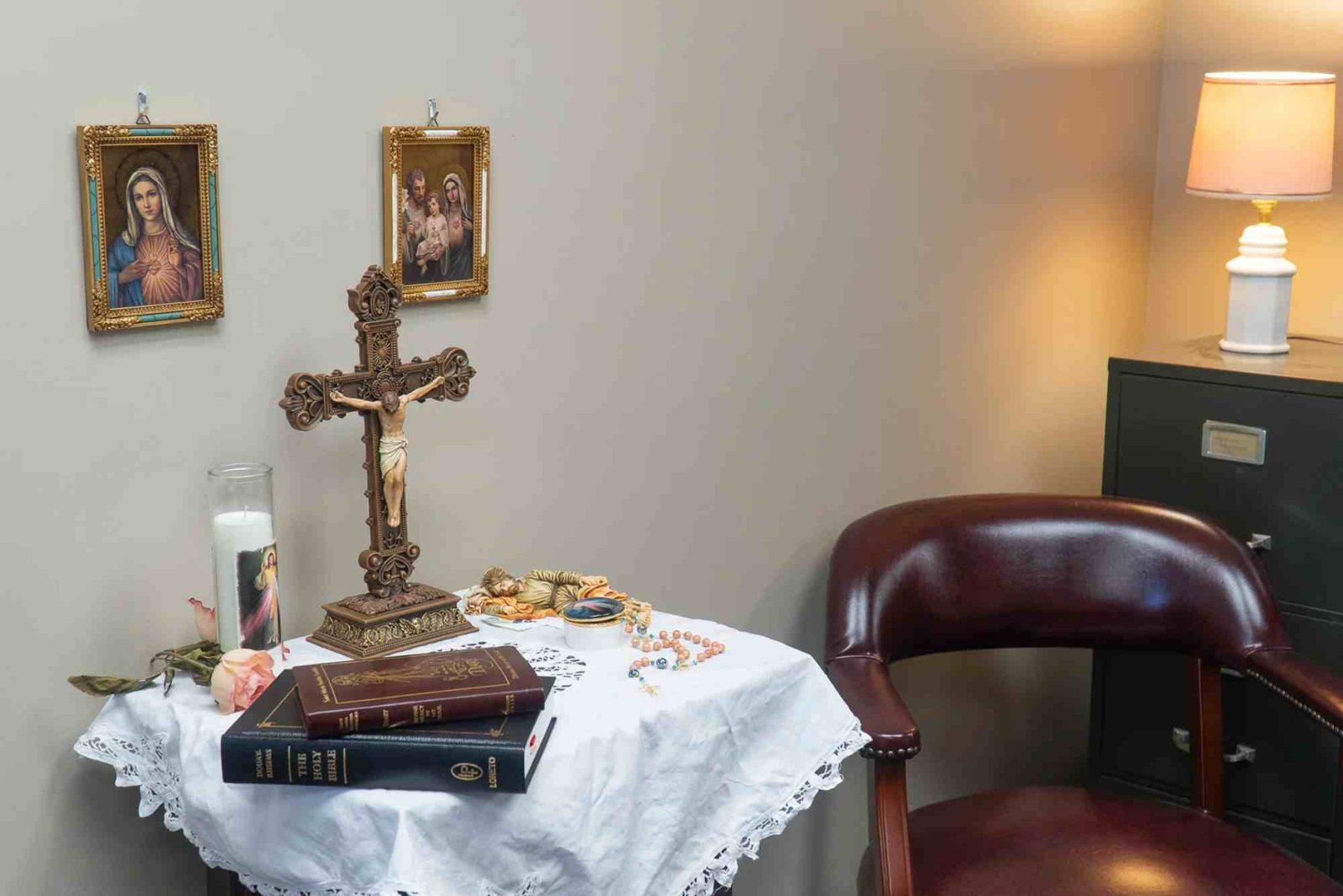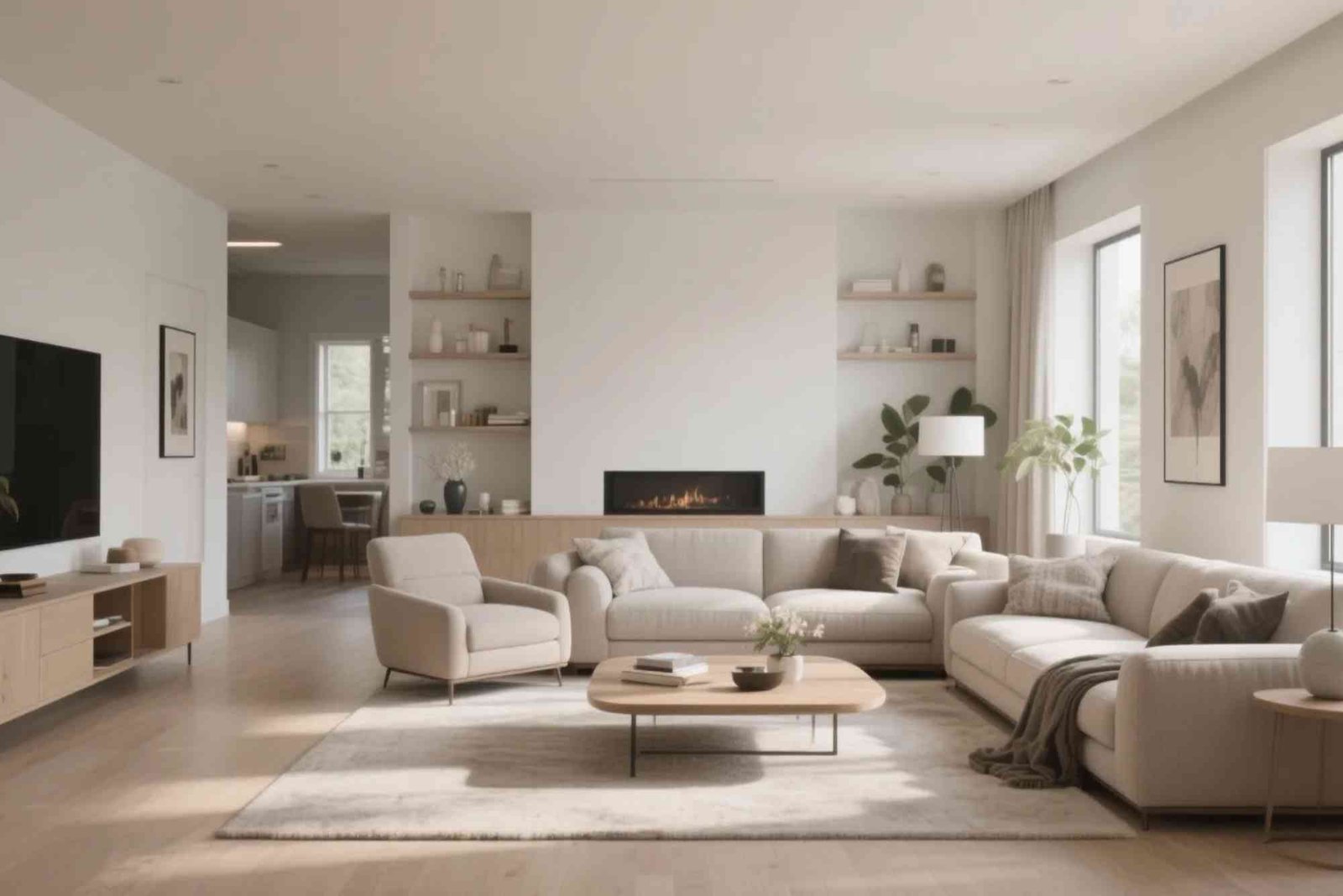Introduction
Creating a living room Catholic wall altar design for home goes beyond decoration — it’s about building a spiritual corner where faith meets everyday life. Whether you live in a large family home or a compact apartment, a thoughtfully designed altar helps bring serenity, reverence, and divine presence into your daily surroundings.
In this guide, we’ll explore expert design tips, layout ideas, common mistakes, and practical inspiration for setting up a Catholic altar that feels sacred, personal, and beautifully integrated into your living space.
The Meaning of a Catholic Wall Altar in the Home
A Catholic wall altar is more than a decorative focal point. It’s a small sanctuary for prayer, reflection, and devotion. Traditionally, these altars display sacred symbols such as a crucifix, statues of Jesus and Mary, candles, rosaries, and a Bible.
By incorporating an altar into your living room, you invite a daily reminder of faith, gratitude, and peace. It transforms the most social room in your home into a space that connects family members spiritually and visually.
Choosing the Right Wall for Your Home Altar
Selecting the perfect wall is the foundation of your design. Your living room altar should occupy a serene, uncluttered corner with minimal distractions. Ideally, it should face a natural light source — sunlight adds warmth and symbolizes divine presence.
Avoid walls adjacent to television units or noisy areas. If possible, dedicate a wall that’s visible yet peaceful, so it subtly draws attention without overpowering the rest of the room.
Balancing Aesthetic and Spiritual Purpose
Designing a living room Catholic wall altar is about balance — beauty should enhance, not distract from, holiness. Choose colors, textures, and decor that resonate with spiritual calmness.
White, beige, light blue, and soft gold tones evoke purity and divinity. You can also use wood textures for a warm, grounded look. Small shelves, arches, or carved wall niches help frame the sacred elements neatly while maintaining elegance.
Essential Elements of a Home Catholic Altar
Every Catholic wall altar design should include key symbols that hold religious meaning.
Crucifix at the Center
The crucifix is the heart of any Catholic altar. It represents faith, sacrifice, and salvation. Place it centrally at eye level to serve as the focal point of your altar.
Sacred Icons and Statues
Include images or small statues of the Virgin Mary, Jesus Christ, or patron saints. Arrange them in descending size order, ensuring the central figure stands tallest.
Candles and Rosaries
Candles signify prayer and light. Opt for unscented candles in white or ivory for a clean, peaceful glow. Hang or display a rosary beside or draped around a statue respectfully.
The Holy Bible or Missal
Place a Bible or devotional book beneath the icons. You can keep it open to your favorite scripture for daily reflection.
Fresh Flowers or Greenery
Adding flowers brings freshness and renewal to your altar. Choose simple arrangements like lilies, roses, or white orchids — all symbols of purity.
Lighting the Space for Serenity
Lighting plays a vital role in creating a prayerful atmosphere. Soft, warm light from candles or ambient lamps can transform your altar into a tranquil corner.
Avoid harsh overhead lighting; instead, opt for wall sconces or recessed lights that highlight the crucifix gently. The light should be bright enough to illuminate icons but soft enough to maintain reverence.
Integrating Modern Design with Traditional Faith
Today’s living room Catholic wall altar designs for home combine modern minimalism with sacred symbolism. You can integrate faith elements subtly without overwhelming contemporary interiors.
Floating shelves with clean lines, LED backlighting, and neutral palettes can frame religious artifacts beautifully. Combine marble, wood, or brass accents to match your interior style while maintaining the altar’s sanctity.
For an in-depth look at living room Catholic wall altar designs for home, explore more inspirations and layout ideas tailored to various interior styles.
Common Mistakes to Avoid in Wall Altar Designs
Even the most heartfelt intentions can go wrong if you overlook key design principles. Here are frequent mistakes people make when creating their home altar — and how to avoid them.
Overcrowding the Altar
Many homeowners add too many icons, candles, or flowers, making the space look cluttered. Keep the design simple and focused. Each item should hold deep meaning, not just fill space.
Ignoring Proportion and Scale
Large statues or frames can overpower small rooms. Choose items that fit your wall size and shelf depth. Harmony creates visual peace and spiritual calm.
Using Distracting Decor
Avoid glittery or loud decorations. The altar is a sacred space — it should encourage reflection, not compete with your interior decor.
Improper Placement
Never place your altar near a television, entertainment unit, or under air vents. Choose a quiet, respected area that reflects reverence.
Neglecting Maintenance
Regularly dust and refresh your altar. Replace wilted flowers and ensure candles are clean and safe to light.
Creative Themes for Living Room Wall Altars
While tradition is central, creativity allows personal expression within reverent boundaries. Here are a few design themes that balance modern aesthetics and devotion.
Minimalist Sacred Corner
Ideal for apartments or small spaces, this setup includes a crucifix, a candle, and one framed sacred image. The simplicity encourages meditation and focus.
Rustic Wooden Altar
A reclaimed wooden plank shelf paired with brass candleholders and soft lighting adds warmth and authenticity. It feels timeless and heartfelt.
Elegant Marble Niche
For a luxurious touch, marble or stone-textured walls with gold-toned frames and soft illumination create a majestic yet serene altar.
Family-Centered Altar
Display family rosaries, heirloom statues, or a framed family prayer. It connects generations and emphasizes shared faith within your home.
Aligning Faith with Interior Design
Your living room Catholic wall altar design should harmonize with the rest of your home’s aesthetic. Integrate subtle design cues — like matching frames, color tones, or materials — to achieve unity.
If your living room has modern Scandinavian elements, use a white or wood altar setup. For classic or Mediterranean interiors, incorporate arches, columns, or wrought-iron accents.
Explore home & decoration basics to understand how style and faith can coexist beautifully in any space.
Expert Tips for a Meaningful Altar Setup
An altar isn’t only about visual appeal — it’s about intention. Start by blessing the space with prayer before assembling it. Keep holy water nearby for blessings during family prayers.
Rotate seasonal decorations — for example, Advent wreaths or Easter lilies — to align with the liturgical calendar. These small gestures keep your altar spiritually active and visually refreshed throughout the year.
If possible, consult your parish priest for guidance on proper symbolism or positioning. Their insights can ensure your altar reflects both respect and authenticity.
Why Living Room Altars Are Gaining Popularity
Modern lifestyles have made the living room the heart of most homes. Placing an altar here encourages families to pause, reflect, and reconnect with their faith amid daily routines.
It’s not only a symbol of devotion but also a visual anchor of hope and unity — especially in times when serenity at home is more important than ever.
FAQs
What should be included in a Catholic home altar?
A crucifix, sacred icons or statues, candles, a Bible, and sometimes flowers or a rosary are essential components.
Where should a Catholic altar be placed in the living room?
Place it on a peaceful wall away from distractions like the TV or doors. Natural light enhances its spiritual presence.
Can I create a small altar in an apartment?
Yes. Even a single shelf or wall-mounted niche can serve as a sacred spot when arranged thoughtfully.
Should I use real or artificial flowers for my altar?
Both are acceptable. Real flowers add life and fragrance, while artificial ones ensure longevity and easy maintenance.
How do I decorate my Catholic altar for special occasions?
Use seasonal elements like candles during Advent or lilies at Easter to mark liturgical celebrations respectfully.
Designing your living room Catholic wall altar for home is a sacred expression of love, faith, and creativity. By combining thoughtful design with spiritual intention, you create more than decor — you build a divine connection within your daily environment.
Remember to keep your design simple, respectful, and meaningful. Avoid clutter, maintain cleanliness, and let every piece tell a story of devotion.
If you’re ready to transform your home into a haven of peace, visit Vision UAE, our editorial partner for more design insights and spiritual inspirations that blend tradition with modern living.




